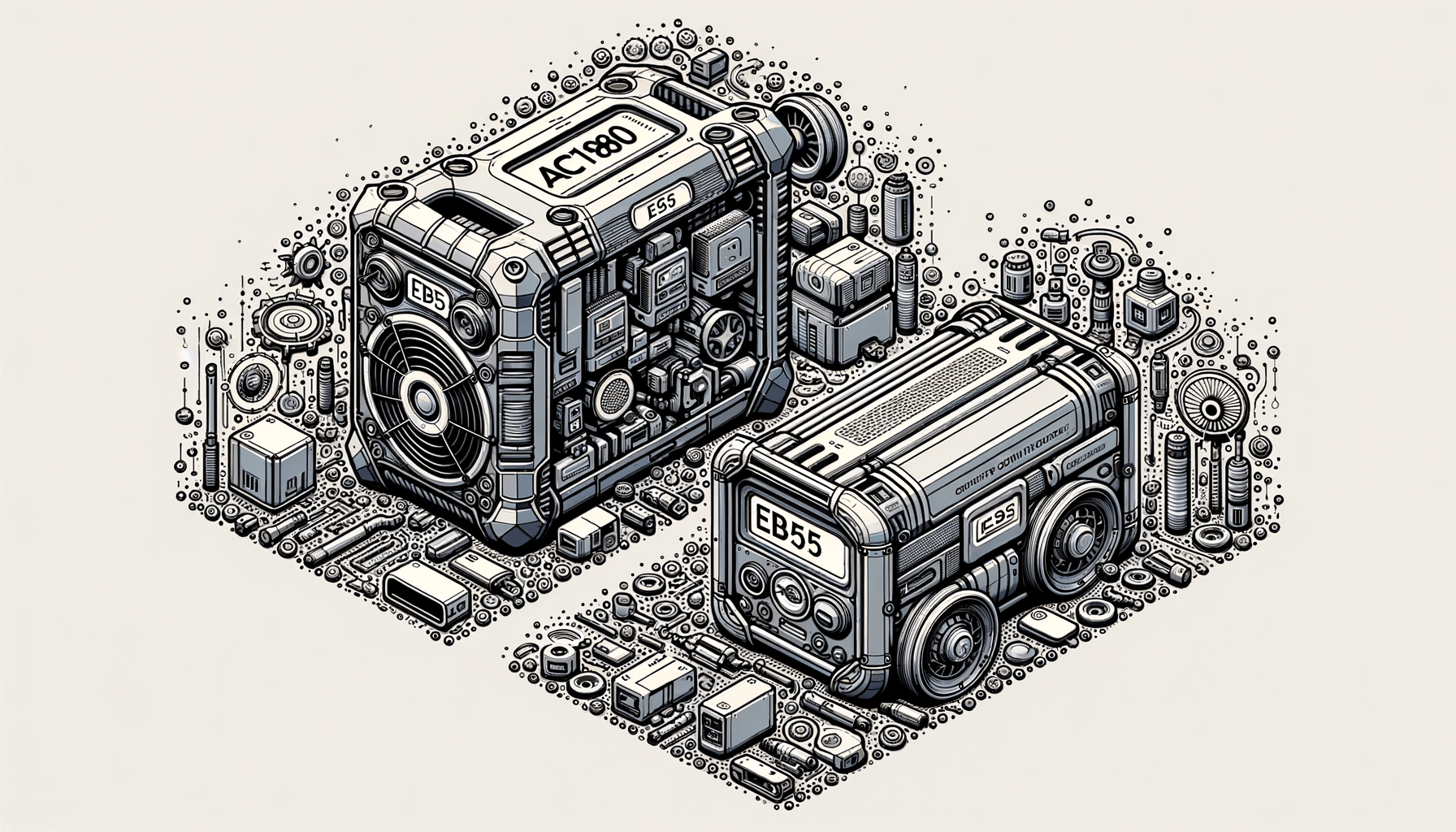In our ever-evolving world of technology, portable power stations have become indispensable for adventurers, remote workers, and anyone preparing for power outages. Today, we’re pitting two giants against each other: the Bluetti EB70S and the EcoFlow Delta Max. Whether you’re camping under the stars or securing your home’s energy backup, this comparison should guide your decision.
Key Differences at a Glance
| Feature | Bluetti EB70S | EcoFlow Delta Max |
|---|---|---|
| Base Capacity | 716Wh | 2kWh |
| Battery Type | LiFePO4 (Lithium Iron Phosphate) | Lithium-Ion |
| Life Cycles | 2,500+ Cycles to 80% Original Capacity | Not specified |
| AC Output | 800W (Surge 1,400W) | 2400W (Surge 4600W) |
| Max Input (Solar) | 200W | 800W |
| Charging Time to 80% (AC Adapter) | ≈4-4.5 Hours | Approximately 65 minutes |
| Weight | 21.4lb (9.7 kg) | 48 lbs |
| Expandable | No | Yes, up to 6kWh |

Diving into the Details
Battery Capacity and Chemistry
The Bluetti EB70S sports a 716Wh capacity and utilizes LiFePO4 chemistry, known for its long life cycle, making it a reliable choice for extended use. In contrast, the EcoFlow Delta Max begins with a higher base capacity of 2kWh, which is expandable and relies on lithium-ion cells, boasting a quick charge time.
Power Output and Expansion
Outlets and power are where these two diverge significantly. The EB70S comes with an 800W AC output suitable for smaller devices and day trips. On the flip side, the Delta Max offers a hefty 2400W (3400W with X-Boost) to run 99% of household appliances, making it the heavyweight option for home backup.
Charging Options and Speed
When it comes to refueling these power stations, both offer solar charging capabilities. However, the Delta Max excels with up to 800W solar input and dual charging options that drastically reduce recharge time. While the EB70S is not far behind with a 200W solar input, its recharge time is noticeably longer.
Portability and Use Cases
Weighing 21.4lb, the Bluetti EB70S is considerably lighter than the 48lb Delta Max. It’s ideal for those on the move, while the Delta Max’s heavier frame is offset by its expandable power, making it a stellar stationary source for home or RV use.
Smart Features and Safety
Smart connectivity isn’t always a dealbreaker, but it can provide convenience. The Delta Max can be monitored and controlled via a mobile app, a feature absent in the EB70S. Both have robust Battery Management Systems ensuring safety and efficiency.
Price Point and Value
With power stations, you often get what you pay for. The EB70S is more budget-friendly, great for casual use without breaking the bank. The Delta Max, although pricier, offers significant value for those seeking a substantial, long-term power solution.
Final Thoughts
Both the Bluetti EB70S and the EcoFlow Delta Max have their strong suits. The former shines with its portability and life cycle, while the latter dominates in capacity and output. Your choice will boil down to specific needs: the casual adventurer vs. the power-thirsty user.

Consider the tech specs, the weight, the charging speed, and the price tag. No matter which you choose, you’re set to empower your off-grid experience or secure your home energy independence.


Leave a Reply